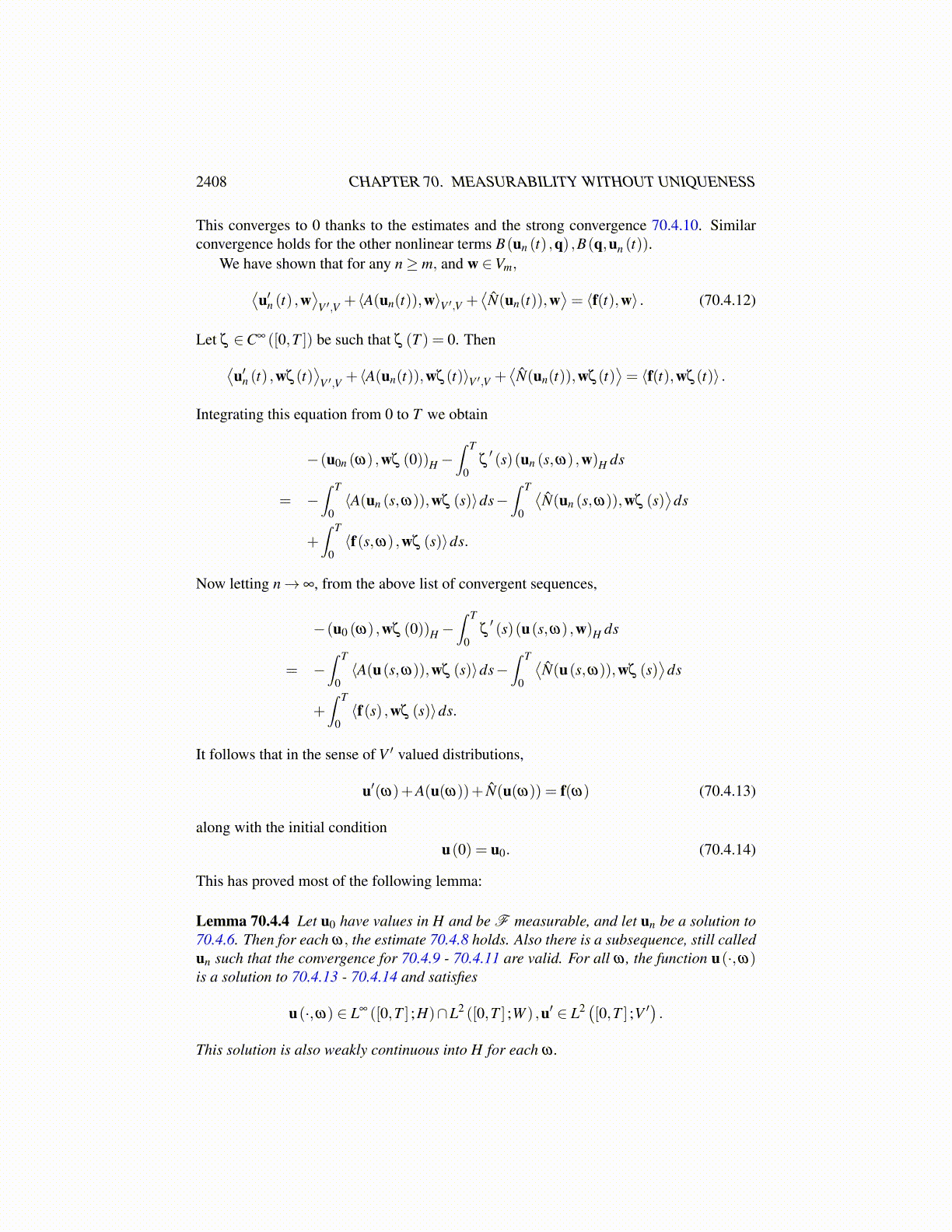
2408 CHAPTER 70. MEASURABILITY WITHOUT UNIQUENESS
Take the derivative, multiply by xk (t,ω) , add, and integrate again in the usual way toobtain
12|un (t,ω)|2H −
12|u0n (ω)|2H
= −∫ t
0⟨A(un(s,ω)),un(s,ω)⟩ds−
∫ t
0
⟨N̂(un(s,ω)),un(s,ω)
⟩ds
+∫ t
0⟨f(s,ω),un(s,ω)⟩ds.
Recall that N̂ (u(t,ω)) = N (u(t,ω))+B(u(t,ω),q(s,ω))+B(q(t,ω),u(t,ω)) . From theabove lemma and that all functions are divergence free, we obtain∫ t
0⟨B(q(s,ω),un(s,ω)) ,un(s,ω)⟩ds = 0,
and ∣∣∣∣∫ t
0⟨B(un(s,ω),q(s,ω)) ,un(s,ω)⟩ds
∣∣∣∣≤C∫ t
0∥q(s,ω)∥V |un(s,ω)|2H ds.
Then one can obtain an inequality of the following form
12|un (t,ω)|2H +
∫ t
0∥un(s,ω)∥2
W ds
≤ 12|u0n (ω)|2H +C
∫ t
0∥q(s,ω)∥V |un(s,ω)|2H ds
+C∫ t
0∥f(s,ω)∥2
W ′ ds+12
∫ t
0∥un(s,ω)∥2
W ds.
Since t → ∥q(t,ω)∥V is continuous, it follows from Gronwall’s inequality that there is anestimate of the form
|un (t,ω)|2H +∫ t
0∥un(s,ω)∥2
W ds≤C (u0, f,q,T,ω) . (70.4.7)
The next task is to estimate ∥u′n(ω)∥L2([0,T ];V ′) for each fixed ω ∈ Ω. We will sup-press the dependence on ω of all functions whenever it is appropriate. With 70.4.6, thefundamental theorem of calculus implies that for each w ∈Vn,⟨
u′n (t) ,w⟩
V ′,V + ⟨A(un(t)),w⟩V ′,V +⟨N̂(un(t)),w
⟩= ⟨f(t),w⟩ .
In terms of inner products in V,(R−1u′n (t)+R−1A(un(t))+R−1N̂(un(t))−R−1f(t),w
)V = 0
for all w ∈ Vn. This is equivalent to saying that for Pn the orthogonal projection in V ontoVn, (
R−1u′n (t)+R−1A(un(t))+R−1N̂(un(t))−R−1f(t),Pnw)
V = 0